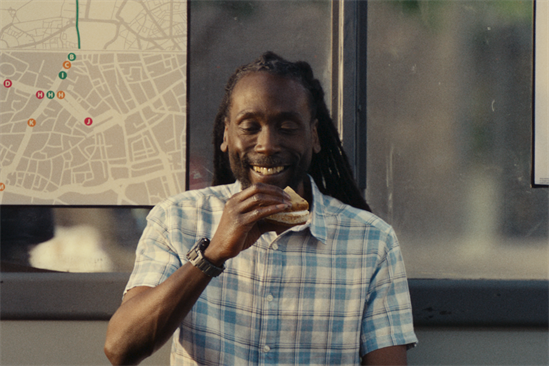

Brand
Sainsbury's
"Live well for less."
-
Established
1869
-
Number of staff
161,000
-
Head office
London, UK
-
Sector
Grocery food
Sainsbury's "Hey Sainsbury's" by New Commercial Arts
Sainsbury's "Spring fresh" by New Commercial Arts
Sainsbury's "Big fella's Christmas dinner" by New Commercial Arts
Sainsbury's "Once upon a pudding" by Wieden & Kennedy London
Sainsbury's "Helping everyone eat better" by Wieden & Kennedy London
Milestones
About Sainsbury's
Sainsbury’s was founded in 1869, when the first store opened on London’s Drury Lane. The brand took the name of its founders, husband and wife John James and Mary Ann Sainsbury. Starting out in groceries, at a time when the food supply was often flawed and goods of dubious quality, Sainsbury’s set out to give customers reassurance, good value and high quality – values it aims to keep at its core today, and which it often refers back to in its communications (in the hashtag #valueofvalues, for example).
By 1882, Sainsbury’s was producing its first own-label goods and diversifying into new categories, such as meat and poultry; by 1969, own-brand lines would account for 50% of the brand’s total turnover.
This wasn’t the retailer’s only breakthrough, however. In the 1950s, for example, it introduced its first self-service stores, and by 1961 it was the first UK food retailer to computerise distribution. It also claims to have been the first UK supermarket to offer organic produce (under its SO Organic range) and to have opened the first in-store bakeries, fishmongers, petrol stations and coffee shops.
From its early days, Sainsbury’s has placed great importance on good customer service and has understood the link between staff engagement and profitability. In 1916 it set up a training school in London’s Blackfriars, and in 1974, it offered employees a stake in the brand via a savings-related share-options scheme. Such initiatives contributed to Sainsbury’s being the only food retailer to hold a Gold accreditation from Investors in People.
Similarly, its environmental conscience and interest in reducing waste are well established. For example, in 1944 it reduced the resources used in its packaging, as part of the war effort, by halving the size of paper labels on cans; in 1989 it pioneered the use of carrier bags made from recycled products, and launched its own environmentally-friendly cleaning-product brand, Greencare. By 2012, it had achieved its goal of zero food waste to landfill sites, and a year later diverted 100% of its operational waste away from them. In 2015 Sainsbury’s introduced Waste Less, Save More, a £10m commitment to help customers waste less food and save money.
Community focus is also a core value of the brand. Over the years, Sainsbury’s has forged charity partnerships with Fareshare (1994), Oxfam (1996), Comic Relief (1999) and the Woodland Trust (2004), among others. As well as joining forces with partners, it has set up its own campaigns on social issues – for example, its Active Kids programme, Live Well for Less, Switch the Fish and Love Your Leftovers.
These purpose-fuelled campaigns provide a good platform for marketing messages, but more traditional, classic marketing – such as TV spots at Christmas – remain crucial to the brand. For example, Its 2014 ‘Christmas is for sharing’ ad, set during World War I, was the most-watched UK ad at the time with 16.9m views. High-profile sponsorships remain an important part of the marketing mix, too. Examples include the brand’s tie-up with the Paralympic Games in London 2012, its continuing support of the British Paralympic Association through to Rio 2016, and its sponsorship of drama on ITV.
When picking up The Marketing Society Brand of the Year Award in 2013, in association with Marketing, marketing director Sarah Warby ascribed the brand’s success primarily to its consistency.
Recently about Sainsbury's

BUSINESS DETAILS
33 Holborn, London EC1N 2HT
www.sainsburys.co.uk
KEY PEOPLE
Sarah Warby, marketing director
Mark Given, director of marketing communications
Sarah Ellis, head of marketing strategy












_1-3.png)



_4-2.png)